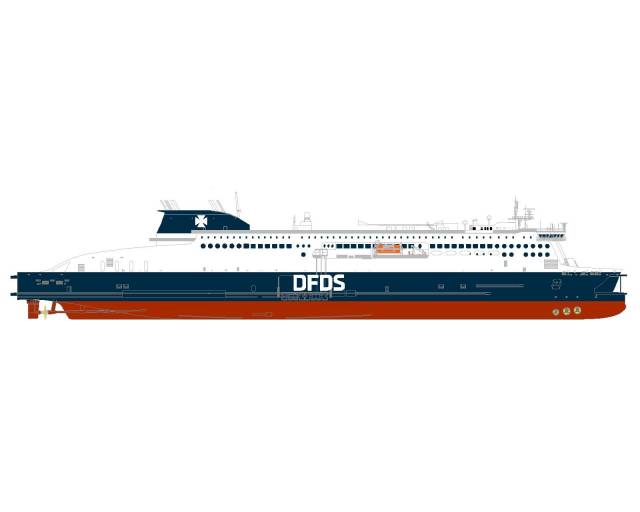#FerryNews - A new ferry for DFDS's Dover-Calais route will be able to carry 3,100 lane metres of cargo and 1,000 passengers. It will be built in China and deployed on the Channel in 2021.
According to DFDS, the Channel is a big and important market. Every year, five million passengers, one million cars and 1.2 million trucks travel between Dover – Calais and Dover – Dunkerque on DFDS’ ferries.
To continuously meet the customers’ demands, DFDS has decided to deploy a new ship specially designed for the services in the Channel from 2021. The ship will be built in Avic Weihai shipyard in China.
“Since the ship has not yet been built, we have great opportunities to make sure that it is designed to give our guests the best possible experience with a completely new ship. We will charter the ship from Stena RoRo and operate it for 10 years with an op-tion to buy it after that. And since we are considering replacing the fleet on the Channel in 2031, the timing is really good,” says Peder Gellert, EVP of the Shipping Division in DFDS
Four DFDS captains have been testing in simulators how to navigate the future ship to make sure that the new ship is best fitted out for the conditions on the Channel. “When sailing on the Channel, we need to ensure that the ship is at least as fast in arrival and departure situations as our current ships. Therefore, we have made modifications to increase maneuverability,” says Henrik Tidblad, Commercial Fleet Director.
The ferry will be highly efficient and environmentally friendly with an expected reduc-tion in oil consumption of around 25% compared to current ferries. It will be able to carry 3,100 lane metres of cargo and 1,000 passengers. With this capacity, it will be the largest of the ships on the Channel.
“I am really looking forward to getting this fantastic ship to boost the business on the Channel. This new ship gives us excellent opportunities to develop our business on the commercial side. A newbuild ship will give us the flexibility to make room for tax-free shopping, depending on the outcome of Brexit. Together with an architect, we will design the interior of the ship to make sure we maximise our opportunities,” says Kasper Moos, VP of Business Unit Channel in DFDS.
The initial plan is for replacement of the oldest of the ferries, Calais Seaways, which was built in 1991. Market developments will determine the final deployment plan, which will be announced in 2020.
































































